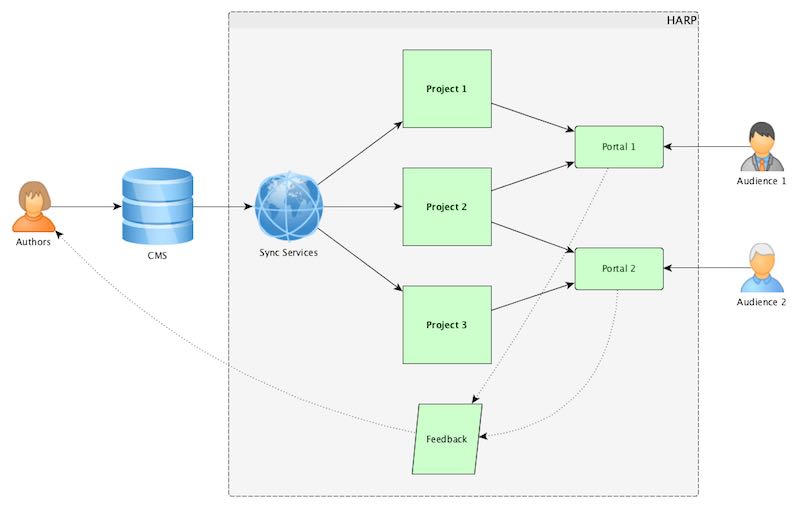The Content Delivery Workflow
When you publish content into Titania Delivery, you place it into Projects, assign Metadata , and then publish the content to one or more Portals. The Portals automatically serve the content from its associated Projects, based on the configured metadata filters. As users interact with the content, feedback and usage metrics are gathered that can be used by authors to improve content.
Storing Content in Projects
A Project is similar to the file system on a computer. You can load files into a Project and organize those files into folders. Any relative paths in your XML content will be resolved using the folder structure of the Project. Projects have a number of additional features to aid in content delivery:
-
Projects include a set of document types to parse and validate the XML files in your Portal.
-
Titania Delivery records the relationships between XML document so that it can understand the implications when files are updated.
-
You can assign Metadata – custom properties – on files stored in a Project to enable dynamic content delivery features.
Delivering Content through Portals
A Portal is the website used to deliver the content stored in Projects to your users. Portals draw content from specific Projects, filtered using Metadata rules. A single Project might be published using multiple Portals, but each Portal might use a different subset of that Project's contents based on the preset Metadata-based filtering.
The look and feel of a Portal is configured using a Portal Theme, which enables you full control over a Portal's appearance. The default Portal Theme is configured with a mobile-first responsive design, so it will function well on virtually any device. The Portal Themes are also easily customized. You can either use the default Theme or you can choose to build a new Portal Theme entirely.
Gathering Metrics and Feedback
Titania Delivery automatically logs access to Portals and records information about each individual visitor. This includes the content they viewed as well as the kind of device they used to view it. These Metrics can be used to drive future decisions of how to structure your content. You can also identify high and low-value content based on how often different topics are viewed. This information can help you decide which topics are most important to your readers, and which topics require more frequent updates.
In addition, each topic in a Portal allows users to specify whether or not that content was useful via a simple up/down vote button. Users can also leave comments on your content, enabling authors to improve it in future revisions.
